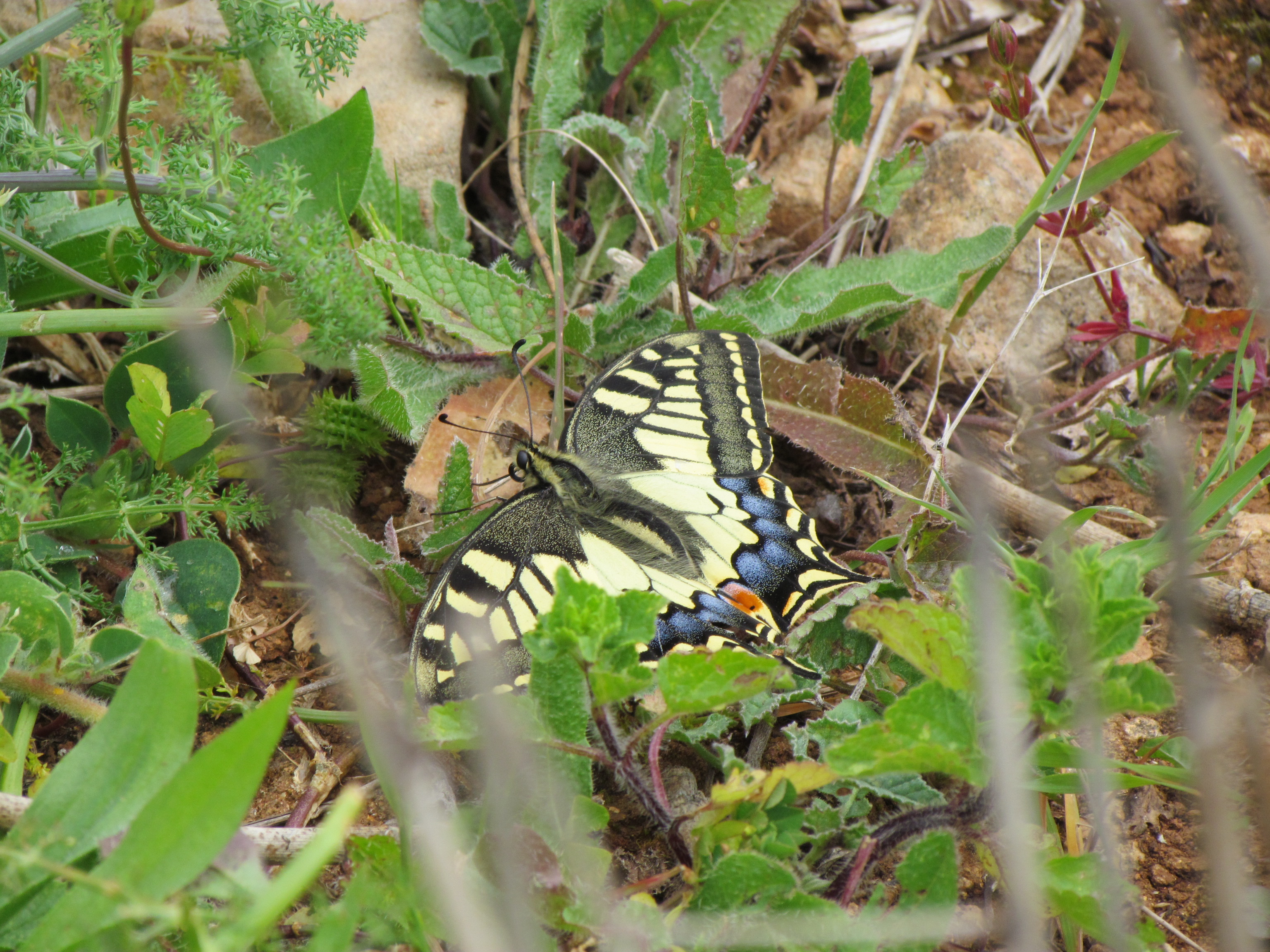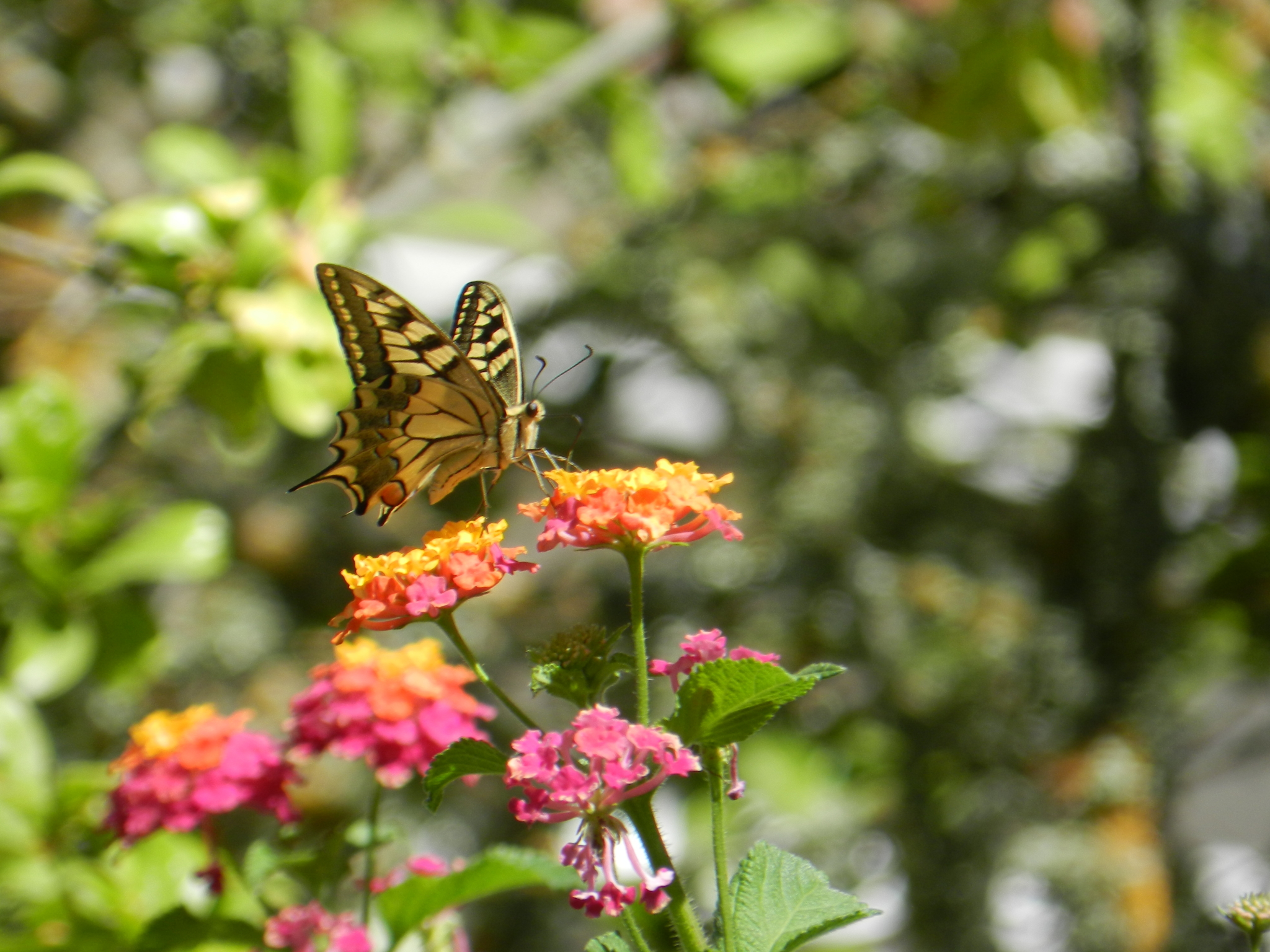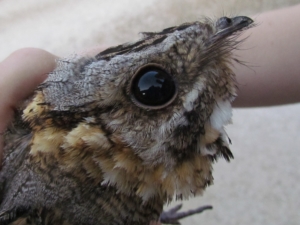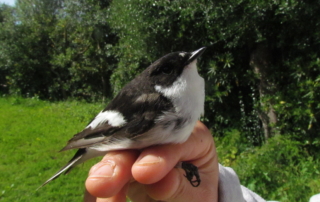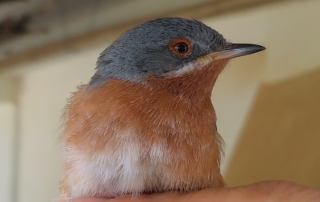Newsletter June 2018


Welcome to our June Newsletter.
Thank you for being ‘A Friend’, we hope you enjoy this month’s articles.
Summer is almost here!
Helen & Filipa
S
N
A
P
SHOT

Paula Banza

Age : 51 years (this month)
Nationality : Portuguese
Job: Teacher
When and how did you start working at A Rocha? The first time I visited A Rocha was in August of 1987 together with two friends Bébé and Marcial. We had become Christians and were members of the University Bible Group and came to the National meeting at Cruzinha, the Centre for A Rocha. Peter and Miranda Harris, founders of A Rocha, invited me to work with them, but I wanted to be a teacher. I applied to a local school and worked as a teacher and volunteered at A Rocha in my free time. Marcial was coming to visit me often and on one of those visits he was offered a job and he learnt how to ring birds. Marcial and I married in 1992 and we lived in a house in Mexilhoeira Grande. In 1996 we went to Azeitão, Mark and Jane Bolton were the Centre Managers of A Rocha at that time. In 2000 we came back as Marcial was employed as the Director of the Centre. I started teaching in a local school and in 2006 I applied for a posting to be working at A Rocha as an Environmental Education Officer. This was in partnership with the Education and Environment Ministry. I stayed 10 years working at A Rocha with Environmental Education. In 2016 I went back to teaching in schools due to the funding no longer being available from the government department.
I finished my Masters in Conservation Biology in 2011, and became the Scientific Director of A Rocha Portugal from 2011 – 2017. At the moment I’m finishing my PhD in “Pollination Ecological Networks and Post-fire Recovery”.
With all the wonderful birds here, which is your favourite? It’s the Storm Petrol. I loved to go visit the monitoring site, where each year in June nets are put out on the cliffs and the birds that are caught are measured and ringed. They are amazing birds and beautiful too.
Comment from the Editor – Paula no longer has a job title as she is not employed to work at Cruzinha in any capacity. Yes she could be described as a Volunteer, but she is much, much more. Paula never stops working, it can be in the kitchen jam making, making lunch, checking the moth traps in the garden and monitoring them, talking to visitors, serving tea and coffee, food shopping, the list is endless. Job Title – Superwoman!
HAPPY BIRTHDAY PAULA!

IFO’s – Identified Flying Objects…
Morphology: It is a big butterfly from the Papilionidae Family. It is one of the most colourful butterflies in Portugal. It has yellow wings with black vein markings; the hindwings also have blue markings and an orange eye spot just below the protruding tails (which gave it the common name, resembling the bird species). Males are larger than females. It fly’s from March to September.
Habitat: Hot, dry, sunny places often areas of cultivation, roadsides, disturbed ground, meadows and gardens. It is often abundant in robust, nectar-rich plants which offer an efficient means of acquiring the energy needed to sustain a large insect.
Swallowtail
(Papilio machaon, Linnaeus, 1758)
Distribution: Europe, Northern Africa and Asia (as far as Japan). In Portugal it is present all over the country.
Notes: The caterpillar of the genus Papilio has an organ on the prothorax called osmeterium, normally is hidden but when threatened the larva turns it outward by inflating it with fluid, it looks like two orange antennas and it has a strong smell and keeps the predators away. In Portugal the caterpillar feeds mainly of Rue (Ruta chapalensis) and Fennel (Foeniculum vulgare).
Tweet… Tweet…
Red-Necked Nightjar
(Caprimulgus ruficollis)

Identification: Is the largest nightjar in Europe. Upperparts strongly patterned, the most distinctive characteristic is the long buff-white supercilium. The crown, cheeks and the mantle are diffusely dark-streaked, but in the field may look almost uniformly brown. The rump is rufous-olive to yellow-brown unstreaked. Males and females have identical plumage.
Habitat and Ecology: Lowlands and hillsides, pine forest, coastal forest, vineyards and open scrubland with cork oak trees. Doesn´t build a nest, eggs are laid directly on the ground. Hunts at dusk and feeds on insects such as moths.
Distribution: It’s a migrant that only occurs in Portugal in the breeding season from April to September. It´s more common in the south (Algarve and Alentejo).
Threats: Least Concern in the International Union for Conservation of Nature (IUCN) red list. The major threats are loss of habitat due to urbanization, agriculture and the tourist industry. In cultivated areas the nests are often at risk from agricultural activities. Their habit of resting on roads to cool down makes them vulnerable to vehicles.
DID YOU KNOW?

- Spring is the time for the juvenile’s arrival! On the 19th of April we had our first juvenile birds! A Hoopoe (Upupa epops) and a Goldfinch (Carduelis carduelis).
- Spring migration is not so noticeable in the area, birds choose straight routes to get to their destination in Northern Europe; despite of that we had a Pied Flycatcher (Ficedula hypoleuca), a Garden Warbler (Sylvia borin) and a Subalpine Warbler (Sylvia cantilans).
- Around the gardens of Cruzinha we had approximately 16 species nesting: Blackbird (Turdus merula), House Sparrow (Passer domesticus), Sardinian Warbler (Sylvia melanocephala), Serin (Serinus serinus), Greenfinch (Carduelis chloris), Goldfinch (Carduelis carduelis), Great tit (Parus major), Collared Dove (Streptotelia decaocto), Wren (Troglodytes troglodytes), Blue tit (Cyanistes caeruleus), Waxbill (Estrilda astrild), Azure-Winged Magpie (Cyanopica cooki), Short-toed Treecreeper (Certia brachydactyla), Red-Rumped Swallow (Cecropis daurica), Red-Necked Nightjar (Caprimulgus ruficollis) and Lesser Spotted Woodpecker (Dendrocopos minor).
Pied Flycatcher (Ficedula hypoleuca) Subalpine Warbler (Sylvia cantilans)
Friends Event: The Storm Petrel/ Friday 16th June 2018/ €30.00 per ticket (*non – refundable)
An evening trip, for 4 people (Friends ONLY) to the rocky coast, to see the Storm Petrels. This is a unique opportunity to see this pelagic bird inland and one of the only places where this species is ringed far away from the colony.
The evening will start from Cruzinha at 19:30, we then go by car to the beach of Cabanas Velhas, Burgau (more or less 20 minutes driving). There will be a strenuous walk of about 20 minutes from the beach over the rocks.
On arrival you will have the chance to see the nets and there also a nice opportunity to see the stars!
A small picnic will be provided!
We will return to Cruzinha around 00:30.
There are only 4 places available for this special Friends Event, so book early so you are not disappointed.
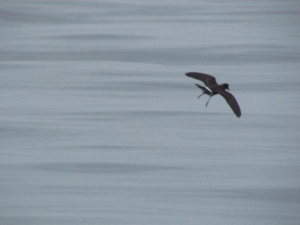
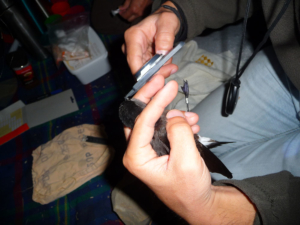
Popped up – Wild Fennel (Foeniculum vulgare)
Identification: It is a perennial herb from the Carrot Family (Family Apiaceae), it can grow up to 2.5 m. It has rigid, glaucous, branched stems, feathery leaves, pinnate (a leaf that has a central axis or stem with parts branching off it) with thread-like lobes and sheathing bases. The yellow small flowers are arranged in umbels(an umbrella-shaped flower head in which the individual flowers are borne on short stems arising from the top of a main stem), the fruit is oblong, ridged and sweet tasting. It flowers from April to September.
Habitat and distribution: Dry open places, borders of cultivated fields, roadsides, riverbanks, fallow ground and often coastal. It is native from the Mediterranean Region.
Notes: Widely cultivated as a culinary and medicinal herb. Some authors consider two different subspecies: piperitum and vulgare, the first having bitter seeds whilst the second sweet seeds which are used as flavouring in gastronomy. It is host plant for the Swallowtail Butterfly (Papilio machaon).
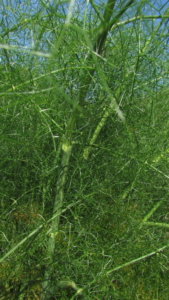

PASSING BY

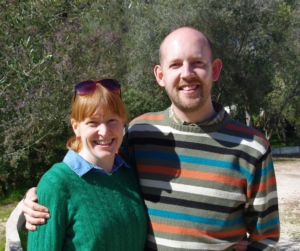 Name: Helen Baker
Name: Helen Baker
Age: 36 (do you have to publish this?)
Nationality: English
What is your job? I am an Environmental Consultant in PricewaterhouseCoopers (PWC) and a trustee for A Rocha UK.
When you first came to A Rocha? The first time I came to A Rocha was in the summer of 2002, I came with my best friend and we were volunteers for 3 weeks. At the time I had just completed my first year at Bristol University where I studied Geography. My friend and I enjoyed Conservation and we wanted to do something related to that, so we searched for organizations and we found A Rocha. I returned in September of 2004, for a 12 month EVS (European Voluntary Service). The project I worked on had to do with the habitat mapping of Ria de Alvor (Nature 2000 site). My supervisor was Will Simonson (the scientific director of A Rocha at the time).
With all the wonderful birds here, which is your favourite? The Little Owl
What is A Rocha for you? A Rocha joins together my two big passions: Conservation and God! I loved the interaction at the dinner table, with people of different backgrounds: Christians, bird lovers, different nationalities, and different ages! I felt I was part of a community helping in many different ways: I fed the chickens, did the weather monitoring, helped on the Thursdays Open Days, helped with the kids, learnt some Portuguese, helped on the wader counts. It is special here, I love it here, and I love to come back, I have good friends here. The place here “recentres” me, calibrates me!
Now Portugal will be even more special to me, because I got engaged on this holiday at Cape San Vicent, Sagres!
CONGRATULATIONS!

DATES TO REMEMBER
1st of June ……… Children’s Day
7th, 14th, 21th and 28th of June … Cruzinha Bird ringing display & Moth Talk (10.15am to 12 am)
10th of June …… Portugal Day (National Holiday)
13th of June …… Popular Saint Day – Saint António (Lisbon holiday)
24th of June …… Popular Saint Day – Saint Pedro
29th of June …… Popular Saint Day – Saint João (Porto holiday)
June: is still good time to see birds as all the spring birds have arrived and the weather is not too hot to spend a full day out. www.arochalife.com Check the website for more information on dates for organised tours
Thank you for supporting the Friends of A Rocha Portugal

Dr Roy Rodrigues
Av. Do Brasil, Qta das Palmeiras, Lt P2, R/c A, 8500-299 Portimão
(+351) 282180683
royaldente@gmail.com

Sítio da Amoreira, Lote 12,
Alvor, 8500-045 Portimão
(+351) 282412562/ 925433047
www.transfair.com.pt
Little owl monitoring
This year from mid-February to the end of March I have been working at A Rocha on a Little Owl monitoring project. At night between 9 and 11, when the little owls are most active, I walk the roads of Quinta da Rocha and stop at standard intervals to play pre-recorded territory calls. The Little Owls in the area then respond and are counted. Their location is estimated as well, to define their territory. We decided to go a step further than this standard monitoring method by also recording their responses. Little Owls have slight variation in their territorial calls and therefore can be individually recognized, as can be see (Figure 1). The monitoring will be repeated by another volunteer at A Rocha until mid-April, when the owls become less active in calling and they start breeding.


Figure 1 – Visual representation of the frequencies over time of little owl calls: The first two are territorial calls, the third spectrogram shows an alarm call.
The data will then be used to make a map of all estimated locations of the recorded calls. By comparing the calls in a given cluster on the map, we can determine whether they come from one individual or multiple. This individual call recognition method will give higher accuracy than standard playback methods in areas with high numbers of little owls, as is the case in Quinta da Rocha. In 2005 there were an estimated 17 breeding pairs. This means 6.4 pairs per square-km, which is considerably higher than in the rest of Europe. This is possibly due to the relatively extensive land use and high number of perches and nesting locations in the orchards and ruins. Although the number of breeding pairs will likely remain higher than in the rest of Europe, it will be interesting to determine if the amount of breeding pairs has decreased or increased in the last 12 years. This comparison will illustrate the change in suitability of the environmental conditions of the habitat of Quinta da Rocha for little owls.
By Lindy Schneider
Thought of the month
“Find what you like and do it often
The world will be a better place for it”
Ulf Meijer

Popular Saints
June in Portugal is the time to celebrate the ’Popular Saints’, the most famous ones are: Santo António (Lisboa), São João (Porto) and São Pedro (Évora), they are patron saints of these cities. During this month it is traditional to eat grilled sardines, to have popular parades and to decorate the houses with basil pots.
European Sardine (Sardina pilchardus, Walbaum, 1972)
This fish is a pelagic species from the Clupeidae Family. It has a long body with blue to green tones on the dorsal area and silver on the abdomen. It feeds on planktonic crustaceans, fish eggs and larvae. They can be found in coastal areas and they are a migratory species. The sardine has an important role in the ecosystems because it is the main food for some dolphins (eg. Common Dolphin), sea birds (eg. Gannet, Shearwaters) and pelagic fishes (Tuna, European Hake). The fishing method which is mostly used to catch this species is by purse seining, this is a method of fishing that uses a fishing net called a seine, it hangs vertically in the water with its bottom edge held down by weights and its top edge buoyed by floats). Since 2006 the Sardine stock has been decreasing, reaching a historic minimum low! Every year the International Council for the Exploration of the Sea (ICES) suggests quotas for the total amount of Sardines that can be captured between Portugal and Spain. In 2017 the Sardine fisheries were forbidden to fish for a couple of months.
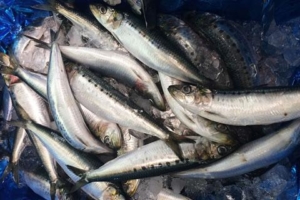
If you have any queries please do not hesitate to contact us:
friends.arpt@arocha.org
Our office is open from Monday to Wednesday from 9:00 to 12:00 am
Or visit us on our open day: Thursdays from 10:15 to 12:00 am
See map https://arocha.pt/en/contact-us/
GPS coordinates
37°08’39.8″N (37.1444) 8°36’29.2″W (-8.6081)
(+351) 282 968 380
Thank you for supporting us!
Hope to see you soon!

